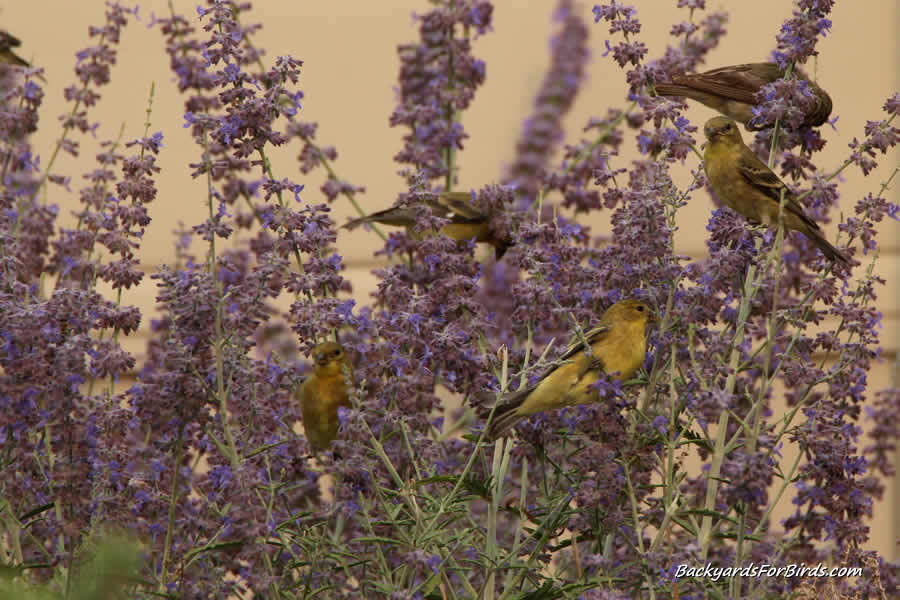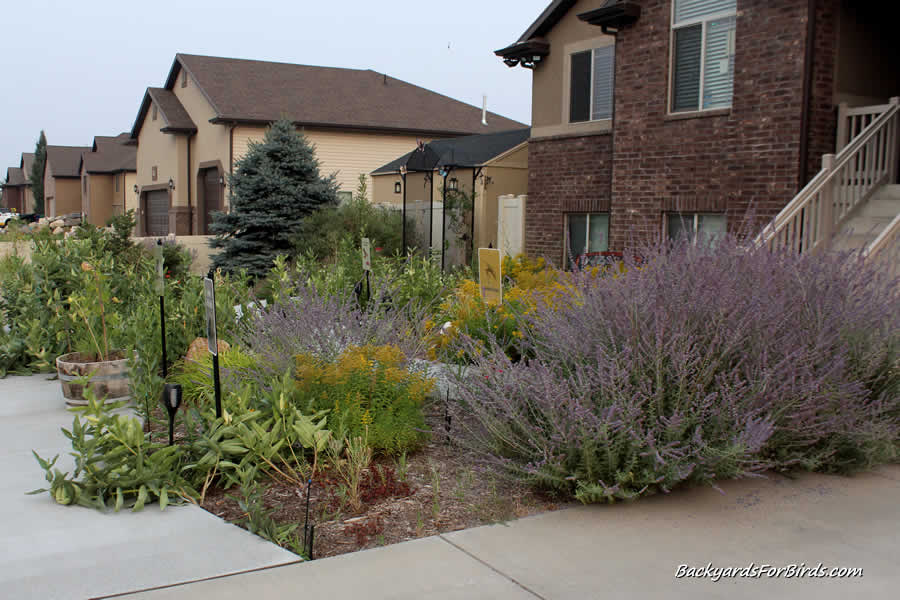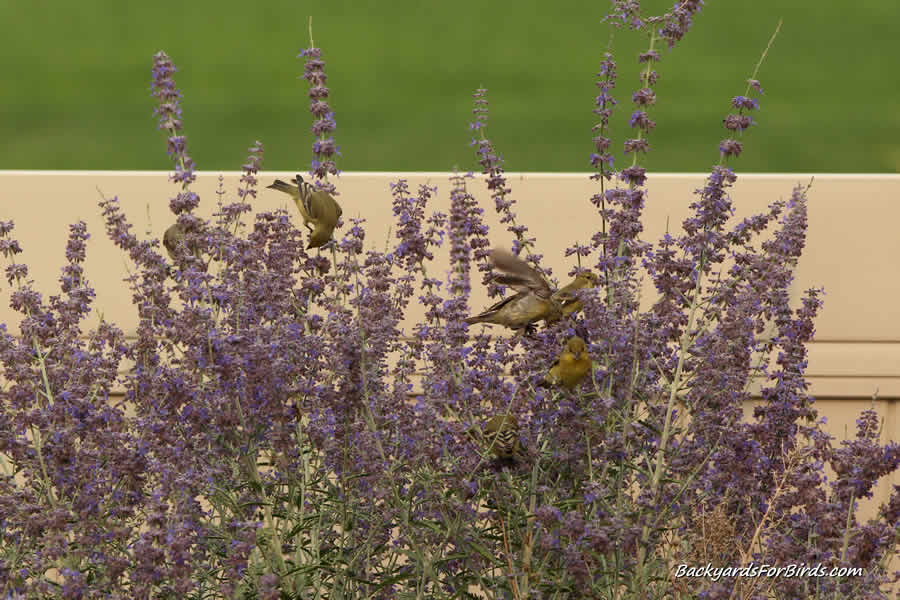One of the most enjoyable and rewarding ways to attract birds to your backyard is to plant beneficial vegetation for birds.
Birds need cover and food and planting bushes, shrubs, and flowers that provide at least one of these items can greatly help attract more birds to the backyard garden.
Simply put, Russian sage provides food for goldfinches in the fall when the blooms start to go to seed and both lesser and American goldfinches will be attracted to the sage and feed upon the emerging buds.
We noticed a large flock of lesser goldfinches on our Russian sage this past weekend, in fact. The sage is starting to go to seed and yesterday goldfinches were observed feeding on it all day long despite having numerous bird feeders out filled with other types of bird seed.

Russian sage is an easy plant to grow and it will attract bees, butterflies, and goldfinches to your yard.
For best results, plant Russian sage where it will get full sun. After it is established, it is very drought tolerant and doesn’t need a lot of water to thrive.
Planting Russian sage can be done either by seed or by a root taken from another Russian sage plant when it is in its dormancy stage, such as in winter or very early spring.
In order to not stress the plant, the root needs to be taken after the sage is no longer active and planted before the ground starts to warm, thus activating the root to grow.
The simplest way I have found is to get a dormant root from a nursery and plant it in a sunny spot in late fall or very early spring. We have never tried starting Russian sage from seed but some of the plants in our yard have been started naturally by seed by birds spreading the tiny sage seeds.
A Russian sage plant will slowly spread a bit but is not really invasive, per se. It will grow to be a rather large plant so keep it away from driveways, sidewalks, and other places it may be a nuisance for passersby as it can oftentimes hang over onto such areas.

It does attract a large number of pollinator bees when it is in bloom so keep that in mind when you decide on a location to plant it.
We have had Russian sage planted in the front yard at a family member’s house for many years now and it continually attracts a high number of bees, a few butterflies, and a steady string of goldfinches.
Russian sage is also a very attractive plant to have in the yard and it puts off a nice aroma during its bloom-time.

(As an Amazon Associate, I earn from qualifying purchases.)
The sage in our yard was originally planted by dormant root purchased from an online nursery but seeds are readily available as well. For more information about the Russian sage, we offer you to visit the link above for a more detailed listing of the plant.
We appreciate your readership and offer you to subscribe to our blog.


